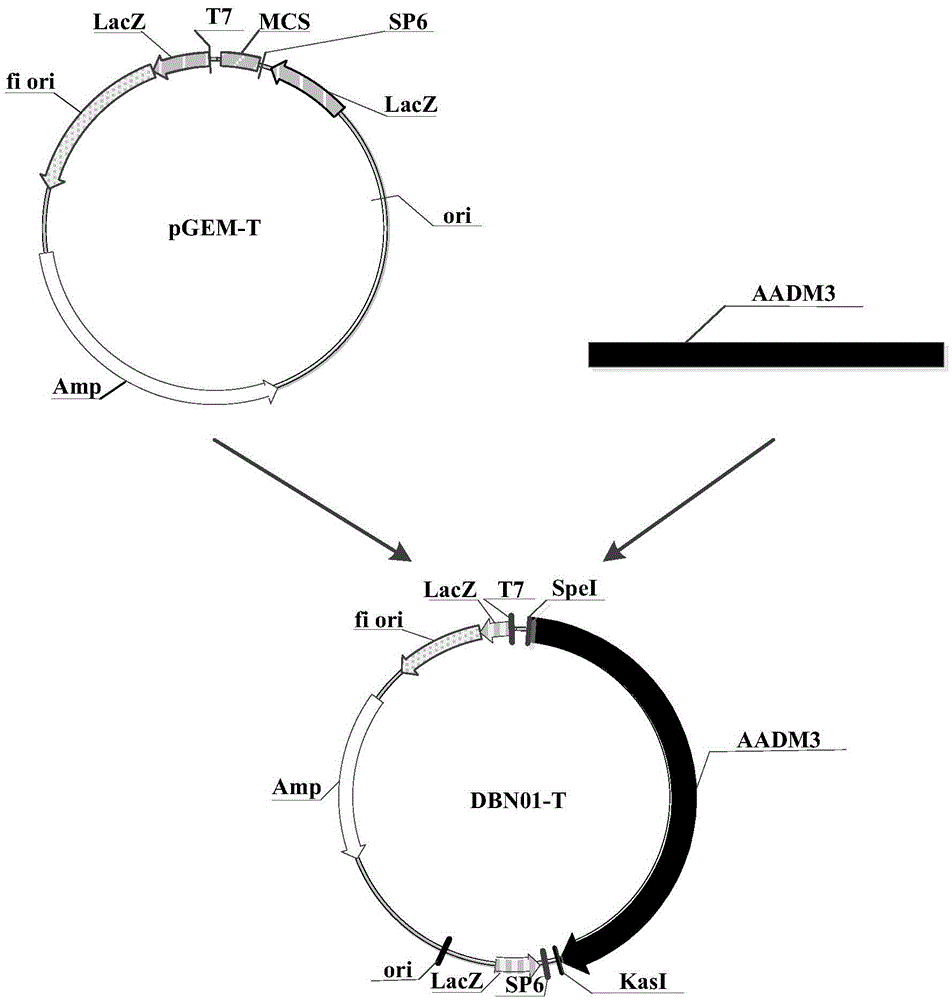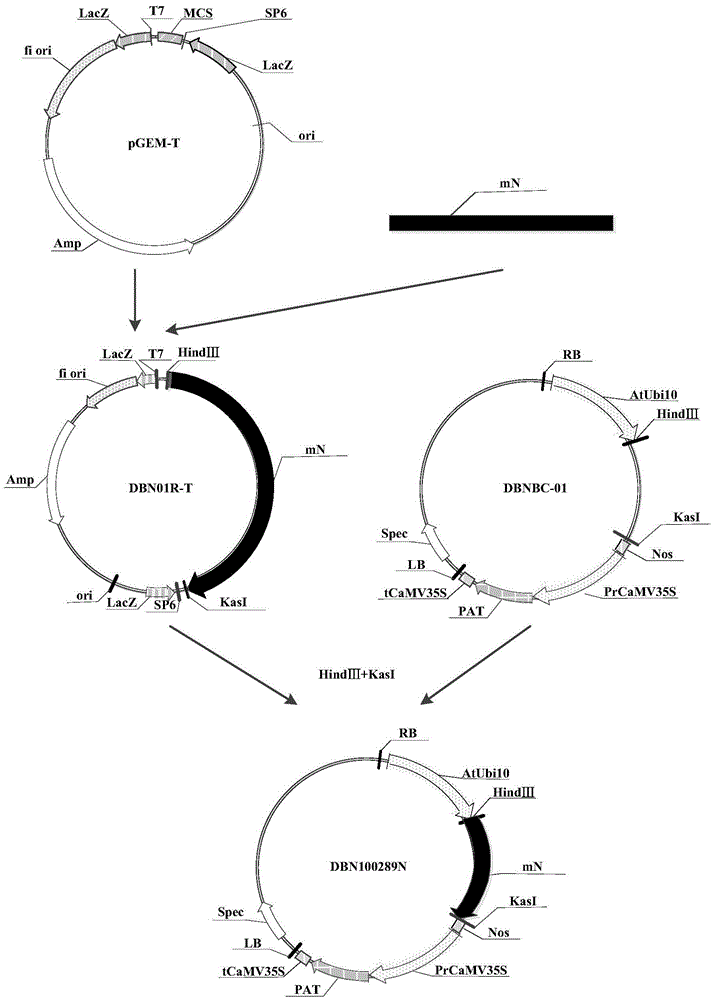Herbicide resistance protein, its encoding gene and use
A resistance gene and herbicide technology, applied in genetic engineering, plant gene improvement, application, etc., can solve the problems of reporting herbicide tolerance without finding the expression level of AADM3 herbicide resistance protein, to achieve increased flexibility, The effect of high flexibility
- Summary
- Abstract
- Description
- Claims
- Application Information
AI Technical Summary
Problems solved by technology
Method used
Image
Examples
no. 1 example
[0093] The first embodiment, the acquisition and synthesis of AADM3 gene sequence
[0094] 1. Obtain the AADM3 gene sequence
[0095] The amino acid sequence (292 amino acids) of the AADM3 herbicide resistance protein is shown in SEQ ID NO: 2 in the sequence table; the amino acid sequence (292 amino acids) encoding the AADM3 herbicide resistance protein was obtained according to the plant-preferred codons ) Nucleotide sequence (879 nucleotides), as shown in SEQ ID NO: 1 in the sequence listing.
[0096] 2. Synthesize the above AADM3 nucleotide sequence
[0097] The AADM3 nucleotide sequence (shown in SEQ ID NO: 1 in the sequence list) was synthesized by Nanjing GenScript Biotechnology Co., Ltd.; the 5'end of the synthesized AADM3 nucleotide sequence (SEQ ID NO: 1) is also connected SpeI restriction site, the 3'end of the AADM3 nucleotide sequence (SEQ ID NO:1) is also connected with a KasI restriction site.
no. 2 example
[0098] The second embodiment, the construction of Arabidopsis recombinant expression vector and the transformation of recombinant expression vector into Agrobacterium
[0099] 1. Construct the Arabidopsis thaliana recombinant cloning vector DBN01-T containing the AADM3 nucleotide sequence
[0100] Connect the synthesized AADM3 nucleotide sequence to the cloning vector pGEM-T (Promega, Madison, USA, CAT: A3600), and proceed according to the instructions of Promega product pGEM-T vector to obtain the recombinant cloning vector DBN01-T. The build process is like figure 1 As shown (where Amp represents the ampicillin resistance gene; f1 represents the origin of replication of phage f1; LacZ is the LacZ start codon; SP6 is the SP6 RNA polymerase promoter; T7 is the T7 RNA polymerase promoter; AADM3 is the AADM3 nucleoside Acid sequence (SEQIDNO:1); MCS is the multiple cloning site).
[0101] Then the recombinant cloning vector DBN01-T was transformed into E. coli T1 competent cells (Tran...
no. 3 example
[0111] The third embodiment, the acquisition of Arabidopsis plants transformed with AADM3 nucleotide sequence
[0112] The wild-type Arabidopsis seeds were suspended in a 0.1% agarose solution. The suspended seeds were stored at 4°C for 2 days to complete the need for dormancy to ensure synchronous germination of the seeds. Mix horse manure soil with vermiculite and irrigate it with water until it is wet, and drain the soil mixture for 24 hours. The pretreated seeds were planted on the soil mixture and covered with a moisturizing cover for 7 days. Let the seeds germinate and the light intensity is 120-150μmol / m at constant temperature (22℃) and humidity (40-50%) 2 Plants are cultivated in a greenhouse under the conditions of long daylight (16 hours of light / 8 hours of darkness) in seconds. Begin to irrigate the plants with Hoagland nutrient solution and then irrigate with deionized water to keep the soil moist but not wet.
[0113] Use flower soaking method to transform Arabidop...
PUM
 Login to View More
Login to View More Abstract
Description
Claims
Application Information
 Login to View More
Login to View More - R&D
- Intellectual Property
- Life Sciences
- Materials
- Tech Scout
- Unparalleled Data Quality
- Higher Quality Content
- 60% Fewer Hallucinations
Browse by: Latest US Patents, China's latest patents, Technical Efficacy Thesaurus, Application Domain, Technology Topic, Popular Technical Reports.
© 2025 PatSnap. All rights reserved.Legal|Privacy policy|Modern Slavery Act Transparency Statement|Sitemap|About US| Contact US: help@patsnap.com



